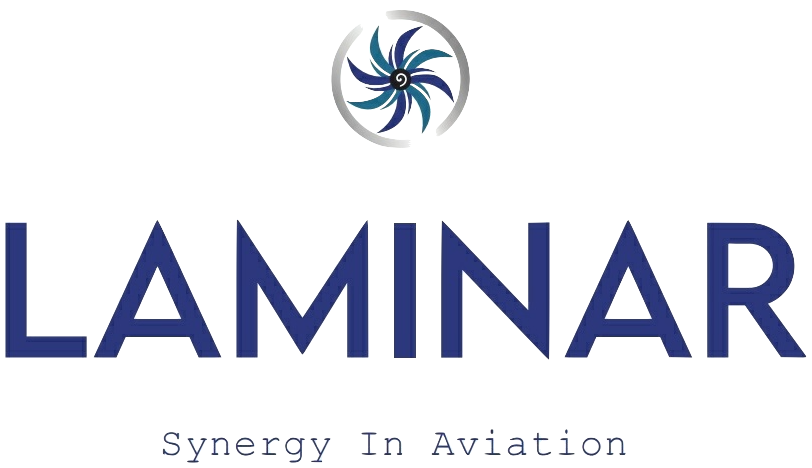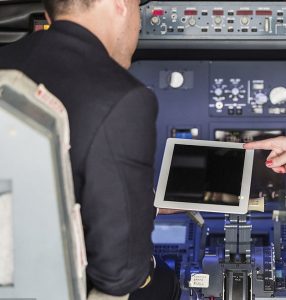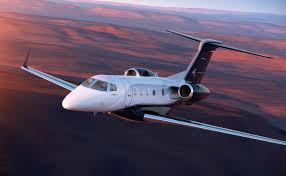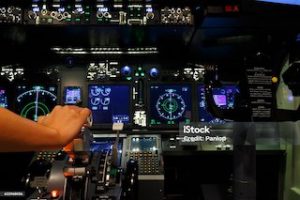Requirements for Pilots Before Airline Training Programs
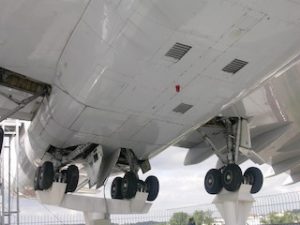 The journey to becoming a commercial airline pilot is a rigorous and structured process that demands dedication, skill, and extensive training. Before a pilot can even be considered for airline training programs, there are several critical requirements that must be met. These prerequisites ensure that aspiring pilots have the foundational knowledge, experience, and qualifications necessary to embark on the challenging and rewarding path of commercial aviation. This article provides an in-depth look at the essential requirements for pilots before they enter airline training programs, outlining the steps and qualifications needed to build a successful career in aviation.
The journey to becoming a commercial airline pilot is a rigorous and structured process that demands dedication, skill, and extensive training. Before a pilot can even be considered for airline training programs, there are several critical requirements that must be met. These prerequisites ensure that aspiring pilots have the foundational knowledge, experience, and qualifications necessary to embark on the challenging and rewarding path of commercial aviation. This article provides an in-depth look at the essential requirements for pilots before they enter airline training programs, outlining the steps and qualifications needed to build a successful career in aviation.
Path to becoming a commercial airline pilot
The path to becoming a commercial airline pilot involves multiple stages, each designed to develop the skills and knowledge required for safe and efficient flight operations. The journey typically includes:
- Basic education
- Medical certification
- Flight training
- Licensing and certifications
- Accruing flight hours
- Advanced training and ratings
- Soft skills and personal attributes
1) Basic education
A strong educational foundation is crucial for aspiring pilots. While the specific educational requirements can vary by country and airline, most airlines prefer candidates who have at least a high school diploma or equivalent. However, a college degree can significantly enhance a pilot’s qualifications and prospects.
High school diploma or equivalent
-
-
- Math and science proficiency: Subjects like mathematics and physics are particularly important as they provide the foundational knowledge needed for understanding flight principles and aircraft systems.
- Language skills: Proficiency in English is essential, as it is the international language of aviation. Pilots must be able to communicate clearly and effectively, both verbally and in writing.
-
College degree
-
-
- Aeronautical science: Many aspiring pilots pursue degrees in aeronautical science or aviation, which offer specialised coursework in flight theory, navigation, meteorology, and aircraft systems.
- Engineering or technical degrees: Degrees in engineering or other technical fields can also be advantageous, providing a strong background in problem-solving and technical knowledge.
-
2) Medical certification
Before embarking on flight training, pilots must obtain a medical certification to ensure they meet the health and fitness standards required for flying. There are different classes of medical certificates, with the first-class medical certificate being the highest and most stringent, typically required for airline transport pilots.
First-class medical certificate
-
-
- Vision requirements: Pilots must have excellent vision, typically requiring 20/20 vision in each eye, with or without correction. They must also have good colour vision, depth perception, and peripheral vision.
- Hearing requirements: Pilots must be able to hear a normal spoken conversation, as clear communication is critical in aviation.
- Overall health: Pilots must be in good overall health, with no conditions that could impair their ability to operate an aircraft safely. This includes cardiovascular health, neurological health, and mental health.
-
3) Flight training
Flight training is a fundamental step in becoming a pilot, providing the hands-on experience needed to develop flying skills. This training is typically conducted at flight schools or aviation academies and involves both ground school and flight hours.
Private Pilot License (PPL)
-
-
- Ground school: Covers essential topics such as aerodynamics, aircraft systems, navigation, weather, and aviation regulations.
- Flight hours: Pilots must complete a minimum number of flight hours, including solo flights, cross-country flights, and night flights.
- Checkride: Pilots must pass a checkride, which is a practical test conducted by an examiner, to demonstrate their flying skills and knowledge.
-
4) Licensing and certifications
To qualify for airline training programs, pilots must obtain various licenses and certifications that demonstrate their proficiency and readiness for advanced training.
Commercial Pilot License (CPL)
-
-
- Increased flight hours: Pilots must accrue additional flight hours beyond those required for a PPL, with a focus on complex aircraft and advanced manoeuvres.
- Advanced training: Covers more sophisticated topics such as commercial flight operations, complex aircraft systems, and emergency procedures.
- Checkride: Pilots must pass another checkride to obtain their CPL.
-
Instrument Rating (IR)
-
-
- Instrument flight rules (IFR): Pilots must be proficient in flying solely by reference to instruments, which is essential for operating in various weather conditions and in controlled airspace.
- Training: Involves both ground school and flight training, focusing on instrument navigation, approach procedures, and IFR regulations.
- Checkride: Pilots must pass a checkride to demonstrate their instrument flying skills.
-
Multi-Engine Rating (ME)
-
-
- Multi-engine aircraft: Pilots must be trained to operate aircraft with more than one engine, which requires an understanding of multi-engine aerodynamics, systems, and emergency procedures.
- Flight training: Includes both ground school and flight hours in multi-engine aircraft.
- Checkride: Pilots must pass a checkride to obtain their multi-engine rating.
-
5) Accruing flight hours
Airline training programs require pilots to have a substantial amount of flight experience. This is typically measured in flight hours, and the minimum required can vary by airline and country.
Accumulating hours
-
-
- Flight instructor: Many pilots work as flight instructors to build flight hours, which allows them to gain experience while teaching others.
- Charter flights and aerial work: Pilots may also accrue hours by flying charter flights, aerial surveys, or other commercial operations.
- Networking: Building connections within the aviation industry can lead to opportunities for accumulating flight hours through various flying jobs.
-
6) Advanced training and ratings
Before entering airline training programs, pilots often pursue additional advanced training and ratings to further enhance their qualifications.
Airline Transport Pilot License (ATPL)
-
-
- Highest level of certification: The ATPL is the highest level of pilot certification and is required to act as the pilot-in-command (PIC) of an airliner.
- Experience: Requires a significant amount of flight experience, including time as PIC and cross-country flights.
- Written and practical exams: Pilots must pass rigorous written exams and a checkride to obtain their ATPL.
-
Jet Orientation Course (JOC) and Multi-Crew Cooperation (MCC)
-
-
- Jet orientation course: Prepares pilots for the transition from smaller aircraft to jet aircraft, covering topics such as jet aerodynamics, performance, and handling.
- Multi-crew cooperation: Focuses on the skills needed to operate in a multi-crew environment, emphasizing communication, teamwork, and decision-making.
-
7) Soft skills and personal attributes
In addition to technical skills and certifications, pilots must possess certain soft skills and personal attributes that are essential for successful airline careers.
Communication skills
-
-
- Clear and concise: Pilots must be able to communicate clearly and concisely, both verbally and in writing, to ensure effective coordination with crew members, air traffic control, and passengers.
- Listening skills: Good listening skills are crucial for understanding instructions, feedback, and information from various sources.
-
Decision-making and problem-solving
-
-
- Quick thinking: Pilots must be able to think quickly and make sound decisions under pressure, particularly in emergency situations.
- Analytical skills: Strong analytical skills are essential for assessing situations, identifying potential issues, and determining the best course of action.
-
Leadership and teamwork
-
-
- Leadership: As captains, pilots must lead their crew effectively, providing clear direction and maintaining a positive and professional environment.
- Teamwork: Pilots must work collaboratively with their crew, air traffic control, and ground personnel to ensure safe and efficient flight operations.
-
Adaptability and Stress Management
-
-
- Adaptability: Pilots must be adaptable, capable of handling changing conditions and unexpected challenges during flight operations.
- Stress management: Effective stress management is crucial for maintaining focus and performance, especially during high-pressure situations.
-
Importance of meeting pre-airline training requirements
Meeting the requirements before entering airline training programs is crucial for several reasons:
- Ensuring safety: Safety is the top priority in aviation, and the stringent requirements for pilot training and proficiency are designed to ensure that pilots possess the skills and knowledge needed to operate aircraft safely. By meeting these requirements, pilots contribute to the overall safety of air travel.
- Enhancing career prospects: Pilots who meet the pre-airline training requirements have a competitive edge in the job market. Airlines prefer candidates who have demonstrated their commitment to professional development and have the qualifications needed to handle the complexities of commercial aviation.
- Building a strong foundation: The requirements for pilots before airline training programs provide a strong foundation for further professional development. The knowledge and skills acquired during this stage are essential for success in advanced training and throughout a pilot’s career.
Meet those requirements
The journey to becoming a commercial airline pilot is a rigorous and structured process that demands dedication, skill, and extensive training. Before entering airline training programs, aspiring pilots must meet several critical requirements, including basic education, medical certification, flight training, licensing and certifications, accruing flight hours, advanced training and ratings, and developing essential soft skills and personal attributes.
Meeting these requirements ensures that pilots are well-prepared for the challenges of commercial aviation, contributing to overall safety and enhancing their career prospects. By investing in their training and professional development, aspiring pilots lay a strong foundation for a successful and fulfilling career in aviation. The comprehensive preparation provided by meeting these prerequisites not only ensures regulatory compliance but also equips pilots with the confidence and competence needed to excel in the dynamic and demanding world of commercial aviation.
